Injuries
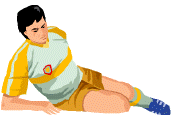 The following article is a small excerpt from one of my books. I hope you’ll want to learn more and let me help you to get into the best shape of your life.
The following article is a small excerpt from one of my books. I hope you’ll want to learn more and let me help you to get into the best shape of your life.
If you have ever suffered from any sort of injury you know how frustrating it can be, not to be able to do things that you normally do. If you’re physically active chances are that sometime in your lifetime you will suffer from some sort of injury.
Most common injuries are strains and sprains. Strains are usually associated with overuse and involve a torn or stretched muscle. Sprains on the other hand involve stretched or torn ligaments, usually in the ankles, knees, wrists or fingers although any joint can be sprained. It is often difficult to differentiate between sprains and strains, however sprains are usually the result of some type of trauma, whether it’s a fall or a sudden twist. This is not to say that all injuries are sports related, you can be injured at work or doing household chores. Often you can pinpoint a single incident that caused your injury, but more often then not it’s an accumulation of years of misuse and improper techniques that may or may not be triggered by a single incident.
The following is a list of what I feel are ten of the most common injuries. In the book ‘Get Fit Stay Fit’ there are suggested treatments, tips and the best exercises to help strengthen these injured area.
LOW BACK DISORDERS
Back pain is a common ailment that will affect over 90 percent of the population at one time or another. It can range from a nagging pain to a pain that is so severe it can be totally incapacitating.
SHOULDER BURSITIS / TENDONITIS
This is one of the most common injuries in sports where the arm is used in an overhead motion. When your arm is lifted overhead or twisted in a certain direction, the pain is usually felt on the tip of your shoulder or part way down the shoulder muscle. In severe cases pain may be felt at all times.
Your shoulder is a ball and socket joint, but the socket in not very big and the shoulder is relatively unstable. This puts a lot of stress on the muscles and tendons that move your arm and help to support your shoulder. The tendons and bursae are prone to becoming inflamed as they go through a very tight channel of bone. When your arm is raised the channel becomes even smaller and is even more vulnerable to becoming inflamed. Think of your bursae as fluid filled sacs that prevent friction. To best describe this, take your hands and rub them quickly together. This creates heat from the friction of your hands. Now imagine that you place a zip lock plastic bag containing a few drops of oil, between your hands and rub briskly. You will probably find that your hands move more freely and without a lot of friction or heat. This is how the bursae function.
TENNIS/GOLFER’S ELBOW
Although these injuries are common amongst racquet players and golfers it is also common in the home and workplace. The condition consists of an inflammation of the tendons in the elbow area. In tennis elbow, it effects the muscles and tendons that bend back the wrist and fingers. With repetitive use the muscle and tendons become overworked and inflamed. This pain is felt on the outside of the elbow. In golfer’s elbow it effects the muscles that flex the wrist and fingers and the pain is felt on the inside of the elbow. Initially you will feel the pain when you are performing at your sport but gradually it will effect your daily activities as simple as raising a glass.
CARPAL TUNNEL SYNDROME
Carpal tunnel syndrome or medial nerve entrapment, is a common injury that effects both athletes and workers. The problem is simply the result of excessive pressure on the median nerve, which is used by the hand and wrist. This nerve travels from the neck, down the arm, across the front of the wrist and into the hand. If this nerve receives excessive pressure or is damaged, the hand will become weak, numb and tingly.
There are several medical problems that effect the function of the median nerve, which include; diabetes mellitus, rheumatoid arthritis, smoking, and circulation problems. If the nerve is not damaged by disease it can be injured by the thickening of the overlying ligaments and tendons. This often occurs with tasks that are repetitive in nature such as assembly line workers or keyboard operators. The nerve can also be damaged in sports like boxing and weightlifting, where the wrists are wrapped too tight, which hinders the function of the nerve.
CONTUSIONS OF THE THIGH
These bruising injuries occur in contact sports like; football, hockey, soccer, rugby and basketball, where your muscles are vulnerable to bumps and blows. These injures can also happen in sports where the muscles are overused like in cycling or jumping. The main damage in this type of injury is bleeding into the muscle after a blow is incurred. The severity of this type of injury can vary from mildly uncomfortable where you experience a swollen tender muscle and pain causing you to limp when you walk, to totally incapacitating and needing crutches to walk.
PATELLOFEMORAL SYNDROME
This syndrome comprises up to 50 percent of all overuse injuries pertaining to you knee. The syndrome is caused by an irritation of the under surface of the patella (kneecap). The pain is evident with sports that require deep knee bends, climbing stairs or after sitting for long periods of time. The patella or your kneecap is a moving part that glides up and down a groove in your thigh bone (femur) as you bend and straighten your knee. The pain is caused by compression of your kneecap and thighbone, which increases as you bend your knee. This irritation of the kneecap causes inflammation, which causes the pain. This syndrome is most common in children and teens and they will gradually grow out of this problem.
This maltracking of the kneecap in the femoral groove is most common in people who have wide hips, knock knees or a rotation of their lower legs. Other causes include; flat feet, weak inner thigh muscles, tight outer knee structures, muscle inflexibility or previous knee injuries.
MENISCUS INJURIES
These injuries are often referred to as a torn cartilage. The Meniscus is a crescent shaped shock absorber which lies between the femur (thighbone) and tibia (shin bone). There are 2 cartilage, one on the inner side of the knee and one on the outer side of the knee. The inner medial meniscus or cartilage is more prone to injury then the outer cartilage.
The cartilage can tear due to overuse or more often the tear is a result of a single traumatic movement. With a torn cartilage, there generally is not a lot of inflammation, however if the torn fragment is large, it may cause the knee to catch between the bones and act like a door jam causing your knee to either lock or give way.
If left untreated, most of these injuries will not heal and will continue to cause you pain and lack of mobility. Reducing the pain, improving your mobility and strengthening your knee are the main goals in your recovery.
ANKLE SPRAIN
Ankle sprains are usually the result of your ankle turning in and are not just injuries that happen to athletes but can happen to anyone at anytime. Often athletes participating in sports with side to side movements are more vulnerable. Running on a level surface does not cause as many ankle sprains as cross country running, trail running or hiking. Ankle injuries are often immediately painful and incapacitating. If treated quickly and properly, your ankle should heel well, but if untreated the injury can often develop into a chronic problem.
PLANTAR FASCIITIS
This is a common foot problem that starts as a dull intermittent pain in your heel and may progress if not treated to a sharp persistent pain. It is usually most painful, first thing in the morning as you take your first steps of the day. The plantar fascia is a thick fibrous material that is attached to your heel bone and fans towards your toes at the bottom of your foot and is responsible for maintaining the arch of your foot. Fascia by the way are different then tendons in ligaments in that they form sheaths around entire muscles. They can withstand momentary high levels of stress without rupturing, however long periods of stress will cause them to become permanently elongated. The shortening of the fascia is usually due to age, cold, poor posture and muscular imbalance and can reduce your range of motion.
This injury is usually the result of repetitive stress and is most common in runners, walkers and racquet sport players. As the fascia is pulled away from the bone, the body reacts by filling in the space with new bone or what is known as heel spurs. The heel spurs are generally not the initial problem but a result of the main problem. Since it is difficult to rest your foot, a vicious cycle develops and is aggravated with every step.
OSTEOARTHRITIS
Degenerative joint disease or wear and tear is the most common joint disease in humans. There is a progressive wear of the joint covering or cartilage and as the cartilage wears away, the bone underneath reacts by getting harder and forms rough, long spurs on the surface of the joint. This can occur on any joint but it usually effects the large weight bearing joints like your hips and knees. Osteoarthritis can occur in many ways, but is often brought on by excessive, repetitive forces that are applied to your joint, like that of a baseball pitcher.
The main symptom is pain and the joint may become stiff, causing you to have a limited range of motion. Also you may hear or feel a popping or cracking in your joint when it is moved.
When it comes to any injury, you should really use your common sense and let PAIN be you guide. If it hurts stop. Most running injuries for example are the result of going too far, too fast. If you have inflicted an injury of this nature on yourself, you also have the power to heal yourself, provided you listen to your body and do the proper things. Also fatigue can play a factor in some injuries. For example when a runner becomes fatigued their knees become stiffer, to protect against collapse and therefore don’t operate as efficiently as a shock absorber. So perhaps with a lack of focus and poor mechanics, improper foot plants may occur leading to an injury.
Performing strength, conditioning and flexibility exercises on a regular basis is an excellent way to help prevent injuries. You should also not be afraid to consult experts either in the medical field or sports industry about your injury and concerns. In today’s high tech world often the difference between playing in pain and enjoying the game you love could be in the equipment you use. Perhaps it’s a more flexible shaft on your golf clubs, less tension on your racquet, a different grip size, new supportive shoes or even a brace. Whatever it takes to get you playing again pain free is what it is all about, so get out there and get active.
I know you want to get in shape and look great. Whatever your fitness goal…to slim down…gain muscle…tone your arms or flatten your tummy…I’m here to help you accomplish your goals and to improve your fitness level. If you have enjoyed this article and the many other free features on my site, and would like some more comprehensive information such as fitness books and CD’s to aid you in achieving your health and fitness goals, please visit my ONLINE STORE where you will find innovative natural health and beauty products to help you become the BEST YOU CAN BE !


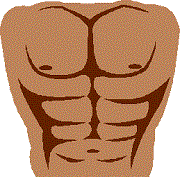 The following article is a small excerpt from one of my books. I hope you’ll want to learn more and let me help you to get into the best shape of your life.
The following article is a small excerpt from one of my books. I hope you’ll want to learn more and let me help you to get into the best shape of your life.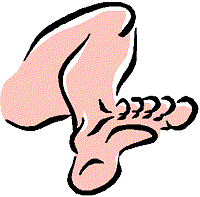 The following article is a small excerpt from one of my books. I hope you’ll want to learn more and let me help you to get into the best shape of your life.
The following article is a small excerpt from one of my books. I hope you’ll want to learn more and let me help you to get into the best shape of your life. The following article is a small excerpt from one of my books. I hope you’ll want to learn more and let me help you to get into the best shape of your life.
The following article is a small excerpt from one of my books. I hope you’ll want to learn more and let me help you to get into the best shape of your life. The following article is a small excerpt from one of my books. I hope you’ll want to learn more and let me help you to get into the best shape of your life.
The following article is a small excerpt from one of my books. I hope you’ll want to learn more and let me help you to get into the best shape of your life.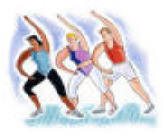 The following article is a small excerpt from one of my books. I hope you’ll want to learn more and let me help you to get into the best shape of your life.
The following article is a small excerpt from one of my books. I hope you’ll want to learn more and let me help you to get into the best shape of your life.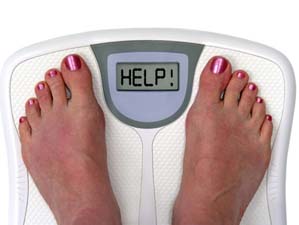 The following article is a small excerpt from one of my books. I hope you’ll want to learn more and let me help you to get into the best shape of your life.
The following article is a small excerpt from one of my books. I hope you’ll want to learn more and let me help you to get into the best shape of your life.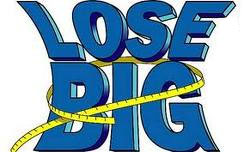 The following article is a small excerpt from one of my books. I hope you’ll want to learn more and let me help you to get into the best shape of your life.
The following article is a small excerpt from one of my books. I hope you’ll want to learn more and let me help you to get into the best shape of your life. I hope you’ll want to learn more and let me help you to get into the best shape of your life and listen to my
I hope you’ll want to learn more and let me help you to get into the best shape of your life and listen to my  The following article is a small excerpt from one of my books. I hope you’ll want to learn more and let me help you to get into the best shape of your life.
The following article is a small excerpt from one of my books. I hope you’ll want to learn more and let me help you to get into the best shape of your life.